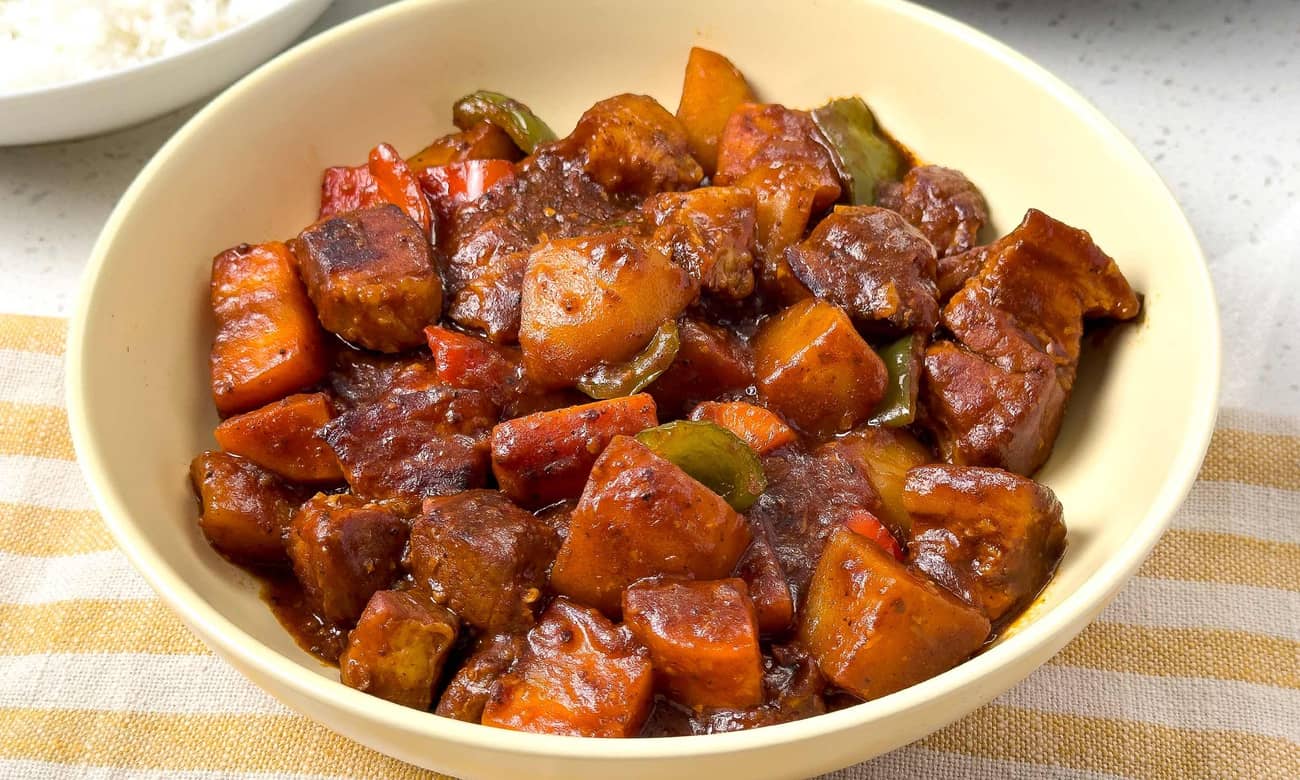
Introducing adobo's sweeter Visayan cousin, humba: braised pork belly in pineapple juice and soy sauce, then studded with salted black beans.
Humba, the Visayan braised pork dish, has roots in Chinese cuisine. Historians believe its origins trace back to hong ba, or hong shao rou, meaning “red-cooked pork”: big slices of pork belly stewed in soy sauce, sugar, and spices. Chinese traders brought the dish to Visayas, which Filipino cooks then adapted to their own ingredients and tastes.
Humba now bears a closer resemblance to adobo than hong ba, making it its richer, sweeter Visayan cousin.
Both adobo and humba use soy sauce, vinegar, garlic, peppercorns, and bay leaves. What sets them apart?
According to Edgie Polistico’s you’ll find these ingredients in humba variations across Luzon and Visayas:
Like any Filipino stew, it welcomes whatever add-ons the home cook fancies. Try vegetables, pineapple chunks, or hard-boiled eggs. Don’t forget the extra rice!
Sear pork: Heat a bit of oil in a heavy-bottomed pot or Dutch oven over medium-high heat. Add pork belly and sear until all sides are golden brown. Remove from pot and set aside.
Braise pork: Reduce heat to medium. Add onion and garlic to the pot and cook, stirring frequently, until soft and translucent. Return pork belly to pot. Add pineapple juice, water, soy sauce, and bay leaf. Stir and bring to a boil. Once boiling, reduce heat to maintain a simmer. Cover pot and cook until pork is fork-tender, 45 minutes to 1 hour.
Add black beans and banana blossoms: Once pork is tender, stir in salted black beans (soaked then drained) and white vinegar. Still simmering, add banana blossoms and cook, covered, for another 5 minutes or until blossoms are soft. Transfer to a serving bowl and enjoy with steamed rice.
